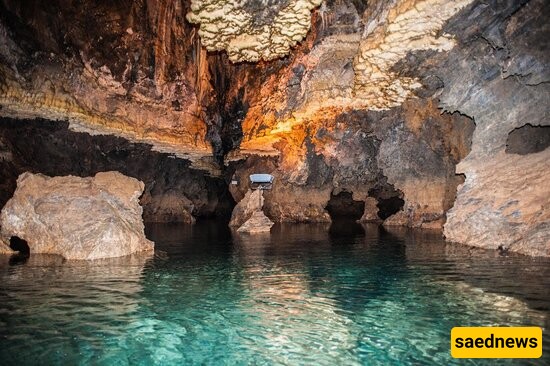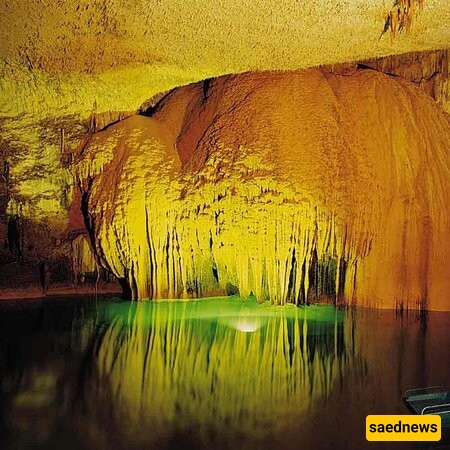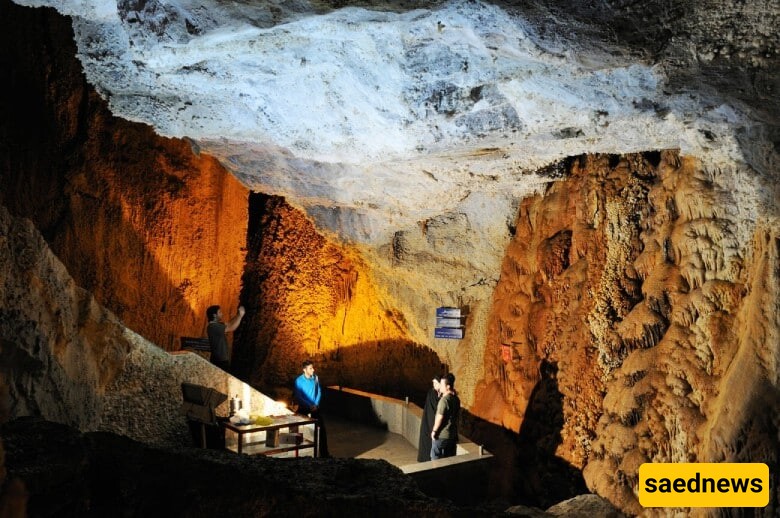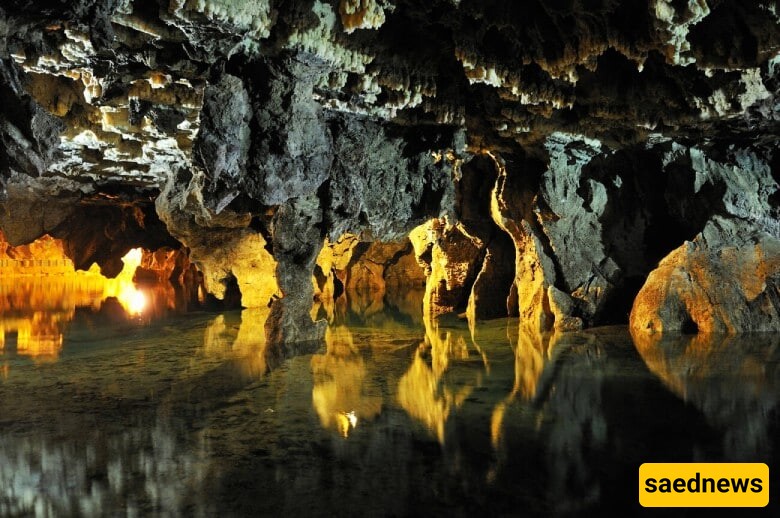SAEDNEWS: Ali-Sadr Cave, located in Iran's Hamadan Province, is among the world’s largest water-filled caves. This underground marvel, with expansive tunnels, unique rock formations, and clear blue lakes, continues to enchant visitors and researchers alike.

Reporting from SAEDNEWS, Ali-Sadr Cave is a geological masterpiece and one of Iran’s top attractions tucked in the mountains of Hamadan Province. With intricate waterways and impressive formations, it offers a unique experience for nature lovers and adventurers. From boat tours to the exploration of ancient artifacts, the cave reveals fascinating insights into natural and human history.
The Cave’s Ancient Origins
Ali-Sadr Cave developed through the gradual erosion of limestone layers from the Cretaceous period as it was formed around 70 million years ago. A blend of volcanic activity and limestone dissolution by underground waters carved this intricate network of tunnels and chambers, forming natural reservoirs over time.
Navigable Waterways
Spanning over 11 kilometers, the cave features vast, water-filled passages accessible only by boat. Visitors can drift along these serene waterways, marveling at the extraordinary stalactites and stalagmites shaped over millennia. The pristine waters reflect the formations above, adding to the tranquil, dreamlike atmosphere.

Unique Rock Formations
The cave is celebrated for its unusual formations, including stalactites and stalagmites that have taken thousands of years to develop. Mineral deposits have given these formations diverse shapes and colors, creating intricate designs that resemble plants, animals, and mythical figures.
Spacious Chambers and Deep Lakes
Ali-Sadr Cave contains massive chambers connected by deep, underground lakes, some up to 14 meters in depth. These areas, illuminated for visitors, give the cave an enchanting ambiance. With ceilings up to 40 meters high in some sections, the cave feels like a natural cathedral, offering an experience of grandeur and mystery.

Artifacts from Ancient Times
Archaeological findings indicate the cave has been used since prehistoric times. Pottery fragments and inscriptions suggest that early inhabitants used the cave for shelter or ritual purposes, hinting at its cultural significance. Such discoveries continue to attract scientific study, adding depth to its natural appeal.
Folklore and Myths
Ali-Sadr Cave is also surrounded by local legends. Some stories speak of ancient travelers seeking refuge within its depths, while others tell of protective spirits guarding hidden treasures. These tales add to the cave’s mystique and enrich the visitor experience.
Guided boat tours are the primary way to explore the cave’s winding water passages. These tours offer close-up views of the formations and insights from knowledgeable guides on the cave’s geology and history. The serene boat journey is an immersive way to experience the cave’s wonders.
Ali-Sadr has been outfitted with walkways, lighting, and informational signs to enhance accessibility. Multilingual information panels explain the cave’s geological history and unique features. Outside the cave, there are cafes, souvenir shops, and picnic areas for visitor convenience.

Ali-Sadr’s delicate ecosystem requires careful management to protect its formations. The mineral-rich structures are sensitive to temperature, humidity, and pollution, making environmental guidelines essential for conservation. Visitor numbers are regulated to minimize impact, with regular monitoring to preserve the cave’s natural beauty.
Local authorities encourage eco-friendly practices, guiding visitors on how to protect the cave environment. Certain areas are restricted to reduce wear, aiming to preserve Ali-Sadr’s unique ecosystem for future generations while allowing people to experience its natural beauty.
The ideal visiting season is between May and October, when temperatures are milder, making both indoor and outdoor exploration more enjoyable. As the cave interior stays cool year-round, visitors should bring a light jacket or sweater. Sturdy, non-slip shoes are also recommended for wet surfaces. Guided tours are advised for safe navigation and a richer understanding of the cave’s significance.
Ali-Sadr Cave offers a glimpse into an ancient underground world shaped over millions of years. With its tranquil waterways, vast chambers, and fascinating formations, the cave stands as one of Iran’s most remarkable natural sites. Ongoing conservation efforts aim to maintain its pristine condition, ensuring that this underground wonder continues to inspire and captivate all who visit.

